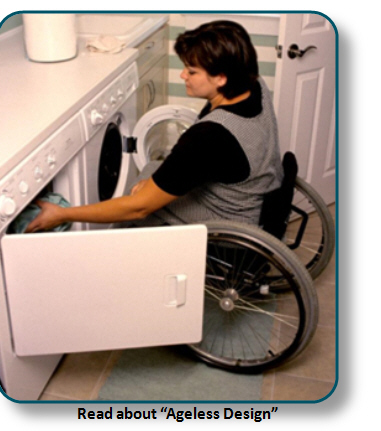Proposed Legislation to Make Homes Accessible
The City of Austin last year passed a law requiring all new homes be more visitable and accessible to people with mobility disabilities. Now U.S. Representative Jan Schakowsky has introduced a bill that would do the same nationally, at least for homes built with federal dollars. Maybe someone will amend it to catch up with where Austin has been for nearly two years now. Let’s hope so.
Eleanor Smith Inclusive Home Design Act Will Make Homes Accessible
 By Jan Schakowsky, U.S. Representative for Illinois’s 9th congressional district (original on Huffington Post)
By Jan Schakowsky, U.S. Representative for Illinois’s 9th congressional district (original on Huffington Post)
9/28/2015 — Today, I introduced the Eleanor Smith Inclusive Home Design Act, which would require new homes built with federal dollars to meet accessibility standards — including a zero-step entrance, wheelchair accessible doorways and bathrooms, and climate controls that are at a height reachable from a wheelchair. Above, I announced the introduction of this legislation to advocates at a Rally with the National Council on Independent Living. They support the legislation.
For too long, the federal government has supported the development of housing that is not visitable or livable for those with mobility impairments. Many municipalities around the country — from Bolingbrook, Illinois to Westport, Massachusetts to Austin, Texas — have already incorporated accessibility standards into their building codes. The Eleanor Smith Inclusive Home Design Act would make sure the federal government follows their lead.
This bill is common sense: It would make sure that as more and more Americans reach retirement age, they are able to ‘age in place’ in their homes. It would also ensure that our veterans who have suffered debilitating injuries on the battlefield are able to more easily find an accessible home. But the benefits of accessible design go far beyond the disability community — it benefits all of us who have friends and family with limited mobility. It is also much cheaper to build an accessible home than it is to retrofit — a difference of a couple hundred dollars on the front end, instead of a couple thousand dollars on the back end. I will continue to work to advance this important legislation.
Accessible to Everyone (Editor)
Simple accessibility features like zero-step entries are just as useful for young moms with baby strollers and road warriors with wheeled luggage as for people with a temporary disability (broken leg) or something longer lasting (wheelchair), so designing products and services with Universal Design principals expands market opportunity and makes good sense. The term Universal Design describes products that serve people of various ages, sizes and abilities. It’s not just about the disabled, and that’s the point. I’m surprised we haven’t seen this sort of common sense legislation earlier, because it’s a no-brainer.

